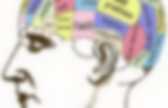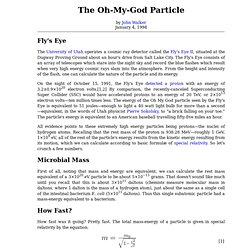

Symmetry in the universe: Physics says you shouldn’t exist. Illustration by Alex Eben Meyer You’re almost unfathomably lucky to exist, in almost every conceivable way.

Don’t take it the wrong way. You, me, and even the most calming manatee are nothing but impurities in an otherwise beautifully simple universe. We're lucky life began on Earth at all, of course, and that something as complex as humans evolved. It was improbable that your parents met each other and conceived you at just the right instant, and their parents and their parents and so on back to time immemorial. But even so, I have news for you: It's worse than you think. Your existence wasn’t just predicated on amorousness and luck of your ancestors, but on an almost absurdly finely tuned universe.
Worse still, the laws of physics themselves seem to be working against us. My physicist colleagues and I like to pretend that the laws of physics are orderly and elegant. 10 Questions Still Baffling Scientists. Science has done a terrific job of answering some of the world’s most difficult questions, but certain mysteries still elude researchers.

How does gravity work? Can your pet fish really predict an earthquake? Why do we yawn so much? Here’s what we don’t know and how close we are to figuring it out. 1. Theories about why we yawn are as common as grumpy toddlers at nap time, but two explanations seem plausible after experimental tests. But if yawns are our brains’ way of kick-starting their efficiency, why is yawning contagious? That’s not the only theory floating around, though. 2. Here’s what we know: Humans really do spontaneously combust. Two Guys Walk into a Bar: The Basics of the Higgs boson. Rupert Sheldrake Online - Homepage. NASA: Don't Let This Happen to Your Planet
Don't Let This Happen to Your Planet. Don't Let This Happen to Your Planet March 29, 2013: Ozone stinks.

People who breathe it gag as their lungs burn. The EPA classifies ground-level ozone as air pollution. Yet without it, life on Earth would be impossible. A fragile layer of ozone 25 km above Earth's surface is all that stands between us and some of the harshest UV rays from the sun. To keep track of our planet's ozone layer, NASA is about to launch the most sophisticated space-based ozone sensor ever: SAGE III, slated for installation on the International Space Station in 2014. "The ISS is in the perfect orbit for SAGE III," says Joe Zawodny, Project Scientist for the instrument at the Langley Research Center. SAGE III works by using the Sun and Moon as light sources. "SAGE III is, essentially, analyzing the colors of the sunset to track ozone," says Zawodny.
In a remarkable display of international cooperation, an ozone treaty was negotiated only two years later. ScienceCasts: Don't Let This Happen to Your Planet. The Oh-My-God Particle. By John Walker January 4, 1994 Fly's Eye The University of Utah operates a cosmic ray detector called the Fly's Eye II, situated at the Dugway Proving Ground about an hour's drive from Salt Lake City.

The Fly's Eye consists of an array of telescopes which stare into the night sky and record the blue flashes which result when very high energy cosmic rays slam into the atmosphere. From the height and intensity of the flash, one can calculate the nature of the particle and its energy. On the night of October 15, 1991, the Fly's Eye detected a proton with an energy of 3.2±0.9×1020 electron volts.[1,2] By comparison, the recently-canceled Superconducting Super Collider (SSC) would have accelerated protons to an energy of 20 TeV, or 2×1013 electron volts—ten million times less. All evidence points to these extremely high energy particles being protons—the nuclei of hydrogen atoms. Microbial Mass How Fast? How fast was it going? And thus, approximately: v = 0.9999999999999999999999951 c Quicktime. The Mathematics of Games. World's best info-graphics show us the value of body parts, surname distribution and what makes a great novel.
Information Is Beautiful Awards celebrated the best data graphicsGraphics showed anything from the monetary value of a human brain to the most common Alaskan surnames By Graham Smith Published: 15:55 GMT, 2 October 2012 | Updated: 16:29 GMT, 2 October 2012 A map of the human body that lists the value of each body part; a map of the U.S. that marks the most popular surnames; and a graphic that shows what plot details make a great novel.

These were just three of the entries at the Information Is Beautiful Awards ceremony in London last week, celebrating the most ingenious methods of making numbers and facts visually interesting. The body parts map provides the price in sterling for every limb, organ and gland based on the growing industry of human tissue recovery. The researchers calculated the values from prices charged by human tissue recovery agencies that collect body parts for research.
If you could do away with your brain altogether, expect to be paid £10,707 for all its parts. Dino Dictionary.